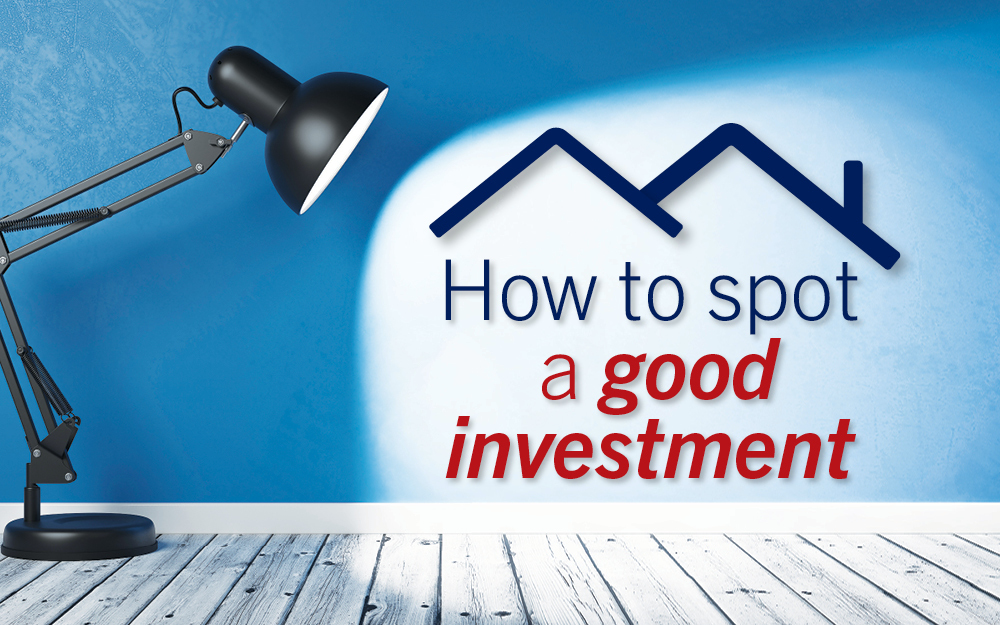19 Jan How to spot a good investment

About the author
Jane Slack-Smith has been named one of the Top 10 Property Experts in Australia by Money Magazine, one of the Top 4 Financial Influencers by Qantas and been awarded the Australia’s Mortgage Broker of the Year twice.

Not even a global pandemic can quash Australia’s obsession with bricks and mortar. We follow auction results like sporting fans and spend more than two and a half hours per week viewing property – whether it’s for a dream home, or the goal of starting an investment portfolio.
Although investor activity decreased during 2020 due to COVID-19, there are still keen buyers hoping to make the most of low interest rates and less competition. Traditionally, properties close to CBDs, near employment hubs and public transport were highly sought after, but the pandemic has changed the way we think about property. As we head into 2021, savvy investors will no doubt be re-thinking their property choices.
With so many types of properties to consider, and variety of areas to invest in, it can seem like an overwhelming task. There are, however, a few golden rules of investing that can help you narrow the search.
Consider your strategy
Are you the type of investor who wants to hold out for a big pay day when you sell (or refinance) your investment property? Or do you want to cash in weekly as your tenant pays the rent?
Most cash flow investors are willing to accept lower growth rates, because they’re after the security of a regular income. This is the strategy often, but not always, favoured by retirees (or soon to be retirees) who are seeking a passive income stream.
Capital growth investors are happy to forgo weekly profit (or even be out of pocket if negatively geared) because they’re waiting for the property’s value to rise significantly. Those who choose this strategy often consider using the equity from capital gains in their investment to fund another property purchase and potentially build a portfolio.
Crunch the numbers
It’s important to understand what rental yield is, and how it works. Rental yield is essentially the amount of money you make on an investment property by measuring the difference between your overall costs and your rental income.
Gross yield is calculated by measuring the profit you make each year from rental income as a percentage of the property’s value, while net yield is calculated by including all expenses involved. Ultimately, an investment property with a high rental yield equates to a greater cash flow.
Do your research
It’s tempting to stick to what you know, but there’s no reason you should only invest close to home. Through thorough research, or the help of a trusted buyer’s agent, you can discover previously unknown neighbourhoods that are potentially profitable.
When shortlisting suburbs for investment look for areas with high price growth. So find out which areas are expanding in terms of population, the local economy and infrastructure. Government and council websites often have a wealth of information on project proposals such as schools, shopping centres, hospitals or other amenities which may affect future property prices.
Understand supply and demand
It’s an age old concept, but it’s just as apt today than ever. The more a commodity is coveted (and the less there is of it) the more people will pay for it – and real estate is no different.
Vacancy rates, which show the percentage of empty properties available on the rental market in a suburb, are a key indicator of the supply and demand of an area and investors should also get to know what tenants want. By choosing a property type that appeals to a wide range of tenants, you’ll find it easier to lease. But it’s also imperative to understand the local demographics.
What’s your property type?
When searching out an investment property, be sure to create a “must-have” list so you can efficiently shortlist suitable properties. Be sure to keep your emotions out of the process, because what you would want in your home is not as important as making sure the numbers stack up.
Consider the ongoing costs of certain properties; a large established house might have high maintenance costs, while a unit in a building with loads of amenities could have hefty strata fees.
It’s important to do the sums on renovation works, holding costs and potential rent or resale value before making an offer.
To discuss your investment strategy or crunch the numbers for a new investment in 2021, please give us a call today.





